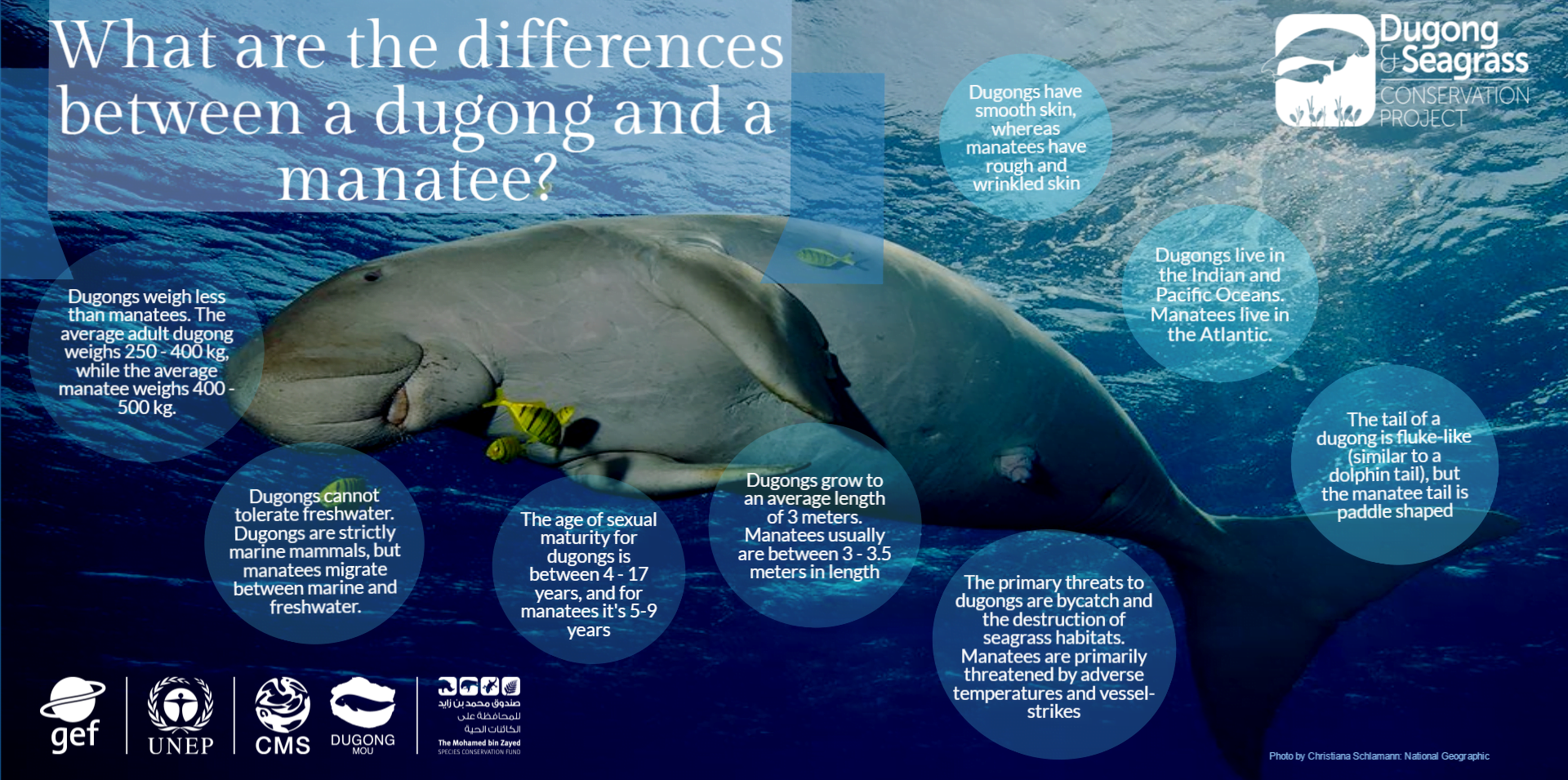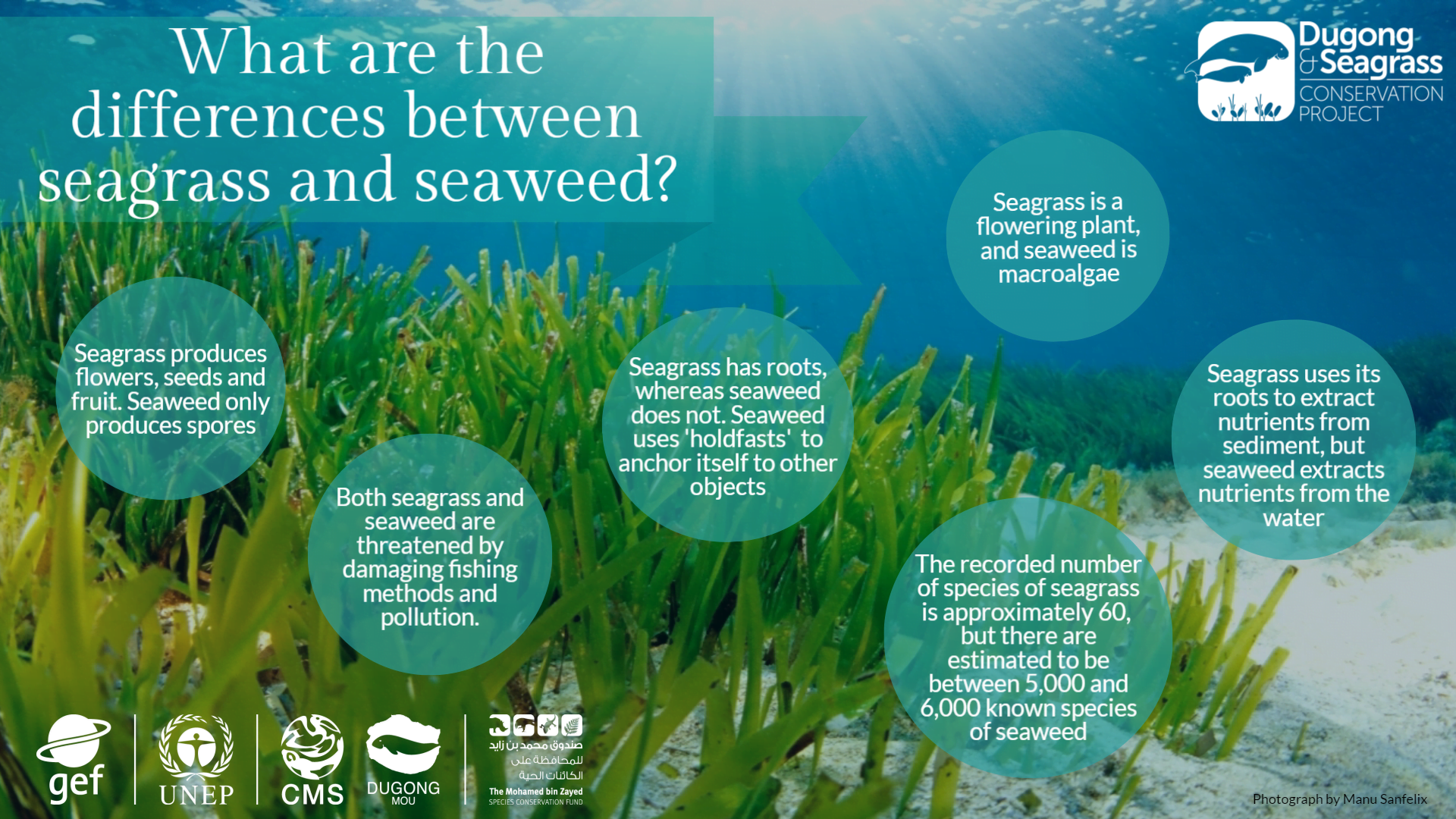New infographics explain differences between (1) dugongs and manatees and (2) seagrass and seaweed
June 15, 2016
Ever wonder what are the differences between dugongs and manatees or between seagrass and seaweed? The Dugong and Segrass Conservation Project is pleased to announce the availability of two infographics that help explain these differences.
The tail of the dugong is fluked (similar to a dolphin tail). The manatee has a paddle-shaped tail.
These were developed for the Dugong &Seagrass Conservation Project by the CMS Dugong MOU Secretariat in Abu Dhabi, UAE.
Seagrass produces flowers, seeds and fruit. Seaweed only produces spores.
What are the differences between a dugong and a manatee?
(1) Dugongs weigh less than manatees. The average adult dugong weighs 250 to 400 kg, while the average manatee weighs 400 to 500 kg; (2) Dugongs cannot tolerate freshwater. Dugongs are strictly marine mammals, but manatees migrate between marine and freshwater; (3) The age of sexual maturity for dugongs is between 4 and 17 years, and for manatees it’s between 5 and 9 years; (4) Dugongs grow to an average length of 3 metres. Manatees usually are between 3 and 3.5 metres in length; (5) The primary threats to dugongs are bycatch and the destruction of seagrass habitats. Manatees are primarily threatened by adverse temperatures and vessel strikes; (6) Dugongs have smooth skin, whereas manatees have rough and wrinkled skin; (7) Dugongs live in the Indian and Pacific Oceans. Manatees live in the Atlantic; (8) The tail of the dugong is fluked (similar to a dolphin tail) the manatee has a paddle-shaped tail.
What are the differences between seagrass and seaweed?
(1) Seagrass produces flowers, seeds and fruit. Seaweed only produces spores; (2) Both seagrass and seaweed are threatened by damaging fishing methods and pollution; (3) Seagrass has roots, whereas seaweed does not. Seaweed uses ‘holdfasts’ to anchor itself to other objects; (4) The recorded number of species of seagrass is approximately 60, but there are estimated to be between 5,000 and 6,000 know species of seaweed; (5) Seagrass is a flowering plant, seaweed is a macroalgae; (6) Seagrass uses its roots to extract nutrients from sediment, but seaweed extracts nutrients from the water.

